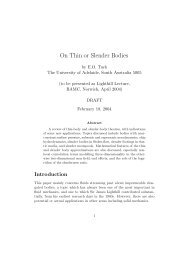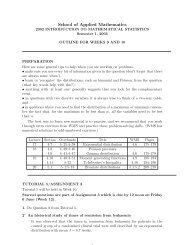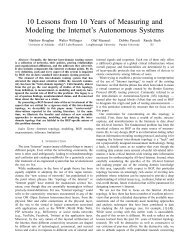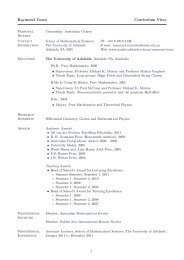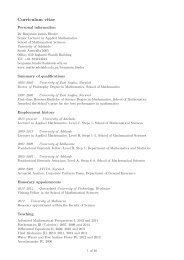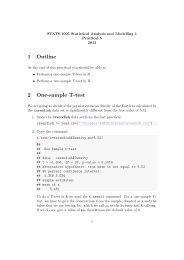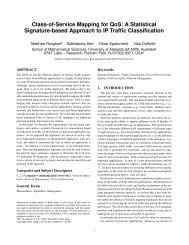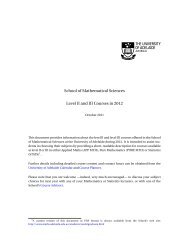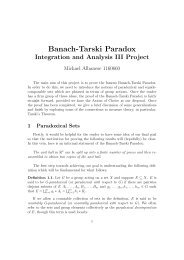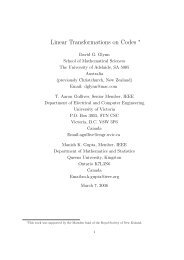PDF of Lecture Notes - School of Mathematical Sciences
PDF of Lecture Notes - School of Mathematical Sciences
PDF of Lecture Notes - School of Mathematical Sciences
You also want an ePaper? Increase the reach of your titles
YUMPU automatically turns print PDFs into web optimized ePapers that Google loves.
2. STATISTICAL INFERENCE<br />
Hence the CRLB is achieved only if U is a linear function <strong>of</strong> T with probability 1<br />
(correlation equals 1):<br />
U = aT + b a, b constants =⇒ can depend on θ but not x<br />
i.e.<br />
∂l<br />
∂θ<br />
Integrating wrt θ, we obtain:<br />
where A ′ (θ) = a(θ), B ′ (θ) = b(θ).<br />
= U(θ; x) = a(θ)T (x) + b(θ) for all x.<br />
log f(x; θ) = l(θ; x) = A(θ)T (x) + B(θ) + h(x),<br />
Hence,<br />
f(x; θ) = exp{A(θ)T (x) + B(θ) + h(x)}.<br />
Finally to ensure that E(T ) = θ, recall that E{U(θ; X)} = 0 and observe that in this<br />
case,<br />
E{U(θ; X)} = E[A ′ (θ)T (X) + B ′ (θ)]<br />
= A ′ (θ)E[T (X)] + B ′ (θ) = 0<br />
=⇒ E[T (X)] = −B′ (θ)<br />
A ′ (θ) .<br />
Hence, in order that T (X) be unbiased for θ, we must have −B′ (θ)<br />
A ′ (θ)<br />
= θ.<br />
Definition. 2.2.3<br />
A probability density function/probability function is said to be a single parameter<br />
exponential family if it has the form:<br />
f(x; θ) = exp{A(θ)t(x) + B(θ) + h(x)}<br />
for all x ∈ D ∈ R, where the D does not depend on θ.<br />
If x 1 , . . . , x n is a random sample from an exponential family, the joint <strong>PDF</strong>/prob functions<br />
becomes<br />
n∏<br />
f(x; θ) = exp{A(θ)t(x i ) + B(θ) + h(x i )}<br />
i=1<br />
{<br />
= exp A(θ)<br />
}<br />
n∑<br />
n∑<br />
t(x i ) + B(θ) + h(x i ) .<br />
i=1<br />
i=1<br />
88





